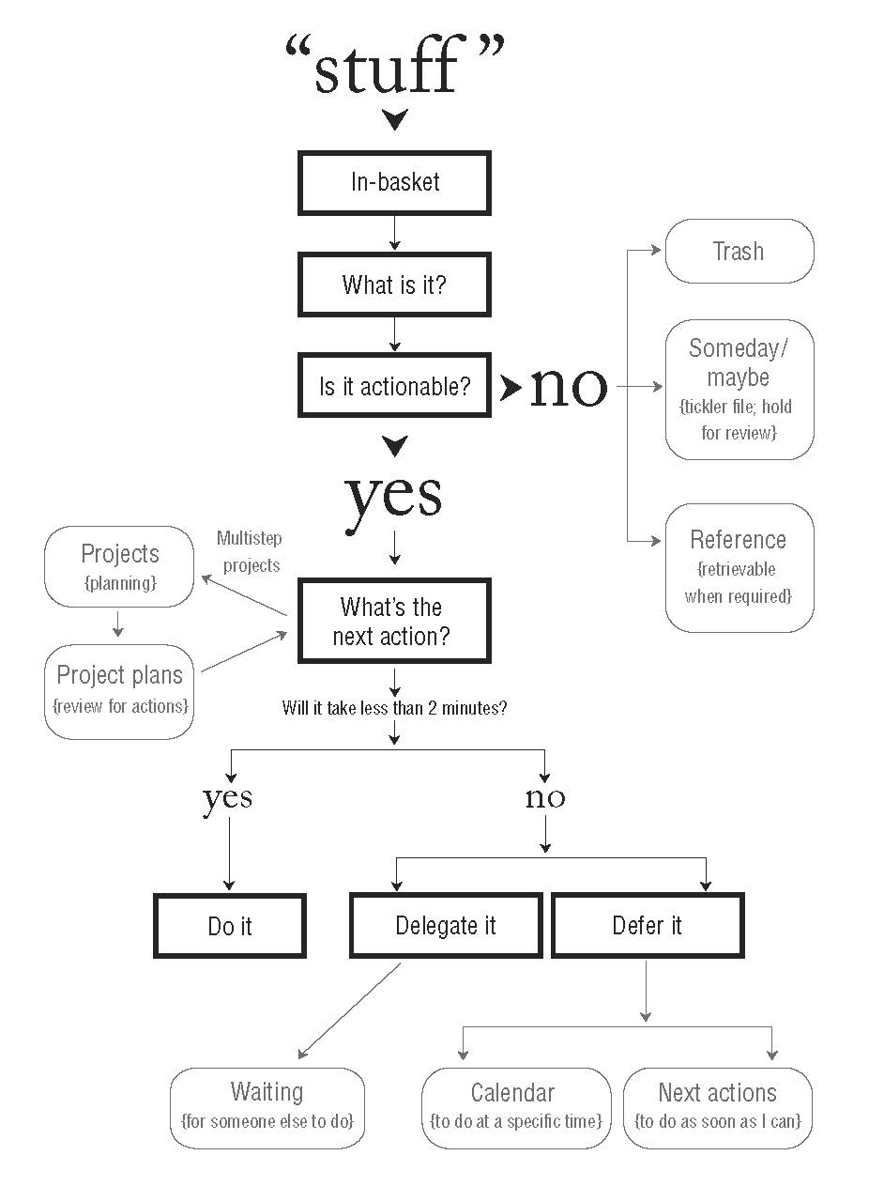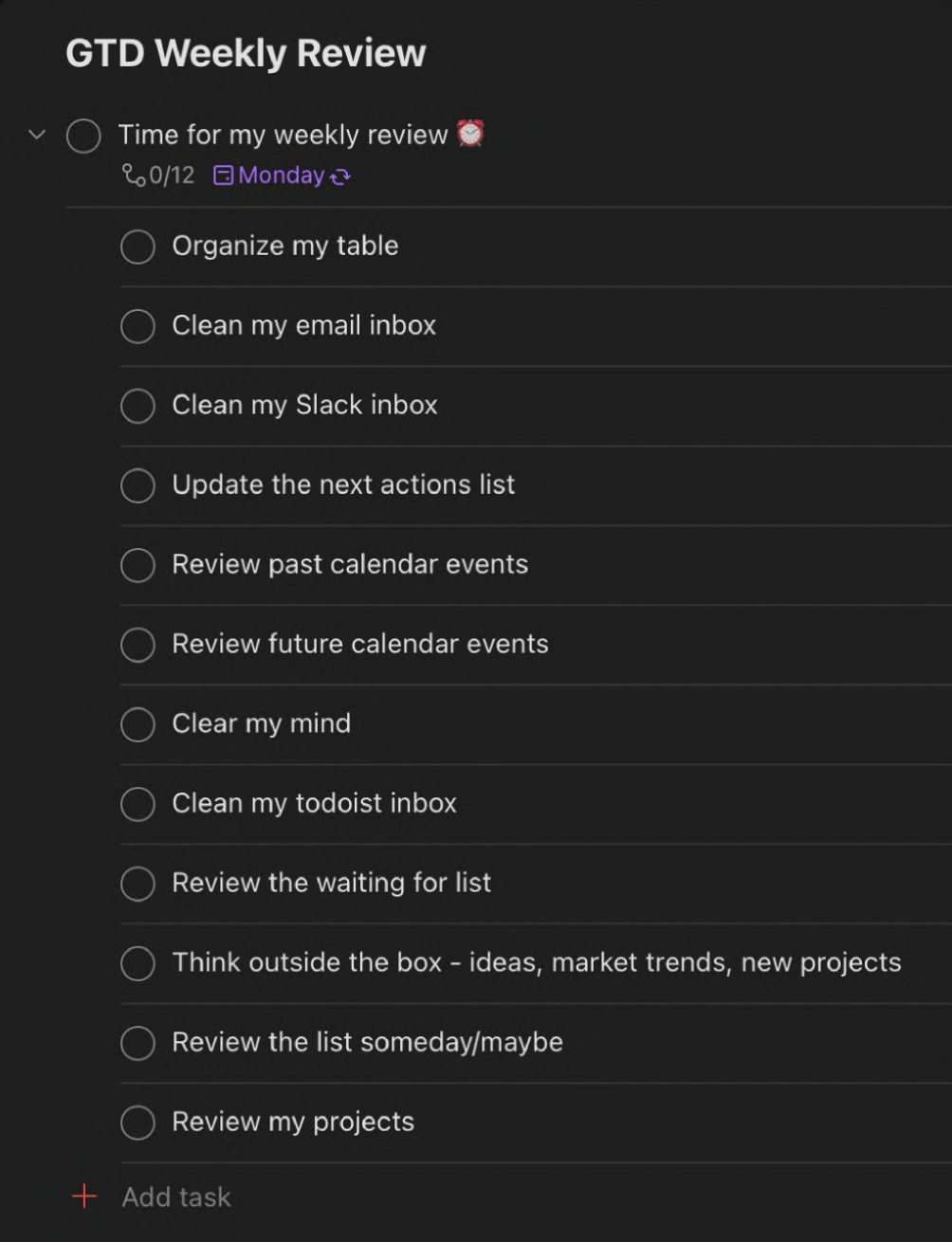Do you ever find yourself feeling anxious about unfinished tasks, just as you're about to relax? It's a common experience: our brains like to remind us about things we have to do at inopportune times, often when we're starting to unwind. This constant reminder can be draining and also contribute to stress and anxiety.
Why do we constantly think about unfinished tasks? It's because our brain wants things to be different. If there's something from the past that we haven't completed, our brain will keep reminding us about it until we take action. If we haven't determined what the desired outcome is or what the next step should be, the task will continue to linger in our minds. Our brain should only remind us about these tasks when we need them, but instead, it constantly disrupts our day and wastes our energy and time.
- Captain J. A. Hatfield
Getting Things Done (GTD)
The "Getting Things Done" (GTD) method aims to help you tackle this issue by creating a system that will result in less stress, more focus, and the ability to fully relax. Once you have a system in place and know that all your tasks are captured, your brain can relax knowing that everything is taken care of and easily accessible. The GTD method focuses on three objectives:
- Capture all tasks and useful information in a logical and trustworthy system, so they are no longer floating around in your head.
- Make decisions about everything you capture, so you always know what you should do next.
- Regularly organize all this information, taking responsibility for what needs to be done and delegating responsibilities as necessary.
The method
These objectives are based on the GTD book: "The Art of Stress-Free Productivity" by David Allen, where he shares five simple steps that we can follow to achieve them:
1. Capture everything: The first step in the GTD method is to capture all of the tasks, projects, and ideas that come to mind, in a way that's very easy for you to do. GTD uses a concept called an "inbox” to capture these items. The idea is to remove these tasks from our mind, put them in the inbox, and send a message to our brain that we are taking action. An inbox can be physical, like a notebook, or virtual, like Todoist, a task management app.
According to the GTD book, the ratio between the number of things we have on our mind and the amount of things we're executing is inversely proportional.
2. Clarify what it means: Creating a to-do list is something many of us do already but sometimes, we fail to keep them organized and clean. So we end up having an unending list that just keeps growing and starts to generate more anxiety. That's why we need to clarify what each item means. Ask yourself if the task is actionable, and if so, what the next action is.

If the task takes less than 2 minutes to complete, do it right away - this is called the "two-minute-rule". And if it takes more time, consider delegating it or moving it to a "Project", another concept you will learn more about in the next step.
3. Organize: When you have a task that requires multiple steps, then create a "Project." In the GTD method, projects should be anything that requires at least two actions to complete. You can consider the following categories when organizing your inbox:
- "Projects": two or more actions are needed
- "Waiting for": not your responsibility but are waiting on someone else
- "Calendar": needs to be done at a specific time
- "Next actions": can be completed quickly
- "Someday/maybe": don't require immediate action but might need to be revisited in the future
- "References": information you want to be easily retrievable in the future
4. Reflect: Regularly stop and reflect on everything you've captured. A good practice is to review your system once a week to make sure everything is organized and not becoming cluttered. It's important to periodically reflect on everything that has been captured in your productivity system and can make you become more present, productive, and organized. It will also make you less stressed and anxious. I also find it helpful to process my inbox at least once a day, where I capture and clean up completed tasks

5. Engage: Finally, the last step is to start executing. Prioritize the items in your productivity system. First, start with tasks that are time-sensitive, or have a deadline that needs to be met. Next, you can consider your context - where you are at the moment, how much energy or bandwith you have and what you can get done in that moment. You should always be realistic so you don't overwhelm yourself. And then, apply the power of focused execution - knowing exactly what you need to do and doing that at the right time. Decide what the priority is and tackle that task first.
In summary, by capturing and processing "stuff" regularly, reflecting on what has been captured, and engaging in the power of focused execution, you can better manage your time, tasks, and projects. Implementing the GTD method can help you achieve greater organization, more productivity and reduced stress.
This article is a summary of GTD - Getting Things Done, a presentation by Pedro Klokner as part of our Lunch and Learn series at Bravado. Pedro is a Senior Product Manager at Bravado.
You can check out the slides here!

